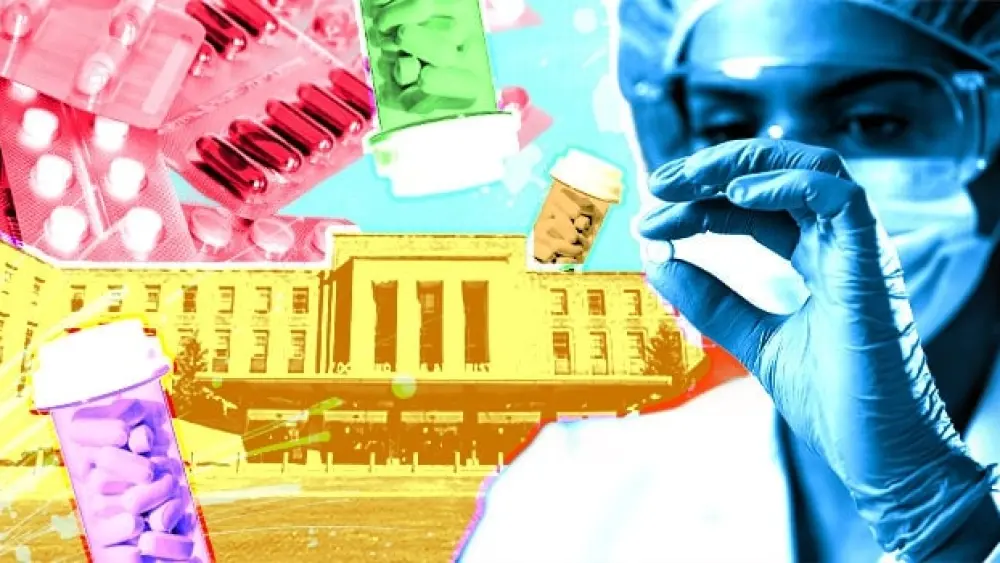Healthcare improvement leaders from Concordia University and Premier Inc. say the reasons behind the high cost of healthcare are multifaceted and point out the actual price of innovation.
Throughout recent memory the United States Congress has pinned the high cost of healthcare on the pharmaceutical industry, citing sometimes exorbitant prices for disease-modifying therapies. But drug prices are only one aspect of a much larger issue.
To put the problem in perspective, before the pandemic, “Healthcare spending in the U.S. was 18% of the gross domestic product (GDP), the highest in the developed world,” Daniel Sem, Ph.D., professor of pharmaceutical sciences at Concordia University Wisconsin, told BioSpace. “That equated to $10,222 per person.” According to The World Bank, the country with the next highest healthcare spending per capita was Switzerland, at $9,666. Canada, Australia and Japan spend between $4,200 and $5,500 per person on healthcare. Their outcomes are comparable to those of the U.S. (These are all pre-pandemic spending levels.) In 2020, U.S. healthcare spending grew 9.7% to $4.1 trillion – $12,530 per person – and accounted for 19.7% of the GDP, according to the Centers for Medicare & Medicaid Services’ National Health Expenditure Accounts.
In the U.S. the two largest contributors to healthcare costs are physicians and clinical services (20%) and hospital care (33%), Sem writes in his book, Purple Solutions. Prescription drug costs in 2020 far exceeded $348 billion, according to the National Health Expenditure Accounts data (the official estimates of total health care spending in the U.S.). Still, that accounts for only 12% of healthcare spending in the U.S., according to the Organization for Economic Cooperation and Development (OECD). Nonetheless, the OECD points out that this is actually lower than in much of the developed world.
One of the big issues contributing to the high cost of healthcare is the lack of transparency. Even now that hospitals are required to post their pricing, the data is so complex that patients still don’t know what a procedure costs. “There’s a lack of transparency and non-value-added middlemen (such as pharmacy benefit managers) are taking advantage of that,” Sem said.
The Cost of Innovation
“People don’t realize the costs of innovation, (particularly) around some of the newer therapies,” Denise Juliano, group vice president of life sciences at Premier Inc., a healthcare improvement company, told BioSpace.
The cost of bringing a drug to market averaged nearly $1 billion between 2009 and 2018, according to a 2020 report in JAMA, although some therapeutic areas topped $2.7 billion. The drugs’ list prices reflect that, but, Sem said, “The pharmaceutical companies, in reality, are receiving only about 60% of the list cost of the drug.”
Restricting drug pricing, the industry says, would limit innovation.
Pay-for-Performance Trends
Payers around the world, however, say the costs for some therapies are still too high. In an effort to bring innovative medicine to patients, the pharmaceutical industry has been moving toward a pay-for-performance model for several years, with some success.
Something similar happened in the hospital industry in the 1980s when diagnosis-related groups were first used for Medicare reimbursements to hospitals. Under that system, hospitals were reimbursed a set amount for certain diagnosis-related categories of patients and were entitled to any overages for efficiency, but could not bill extra if the patient was readmitted within 30 days for that condition or its complications.
“That (outcomes-based reimbursement) movement has slowed a bit in the past several years. But, there are a lot of reasons to believe that having the right data to prove the efficacy and to see the total cost of care…leads to better pricing and better quality of care,” which will help with preferential selection of providers, Juliano said.
Standardization of Costs Too Narrow a Focus
While Sem acknowledged that hospitals are “making incremental improvements,” they also face high levels of uncollectable expenses. The American Hospital Association (AHA) says uncompensated care has cost hospitals nearly $745 billion since the year 2000. The figure for 2020 alone was $42.67 billion, up $1 billion from 2019. Underpayment by Medicare and Medicaid – which combined accounts for more than 60% of hospital care in the U.S. – cost hospitals $100.4 billion in 2020, up from $75.8 billion in 2019.
One strategy calls for increased standardization within hospitals and hospital systems. “Standardizing around items that work really well (and improve outcomes) improves quality and efficiency, and therefore decreases costs,” Juliano said.
The solution isn’t simply to standardize or even to trim expense items, however. “People need to think more broadly about the actual cost to the system,” Juliano said. This requires looking beyond their own budgets to consider the overall consequences of their decisions. For example, the cost savings of choosing the least expensive drug for an indication can be negated if the results are suboptimal. Likewise, discharging a patient too early can lead to complications and readmissions that could have been prevented. Such costs affect the hospital’s bottom line.
Insurance Costs Rise
While the AHA says hospital prices increased an average of 2% per year between 2010 and the beginning of the COVID-19 pandemic, health insurance premiums have increased an average of 4.4% per year during that time.
Payers also have a disincentive to pay upfront for cures (when cures are possible). They argue that they would bear the expense but not reap the savings, because U.S. healthcare plans are largely linked to employers. To underscore that point, the Bureau of Labor Statistics reports the median employee tenure in January 2020 was 4.1 years. The pandemic appears to be shortening that. BLS statistics aren’t yet available for 2022, but Achievers Workforce Institute’s 2022 Engagement and Retention Report says that 66% of surveyed employees plan to look for a new job this year.
With so many factors contributing to high healthcare costs, focusing primarily on drug pricing reform is short-sighted and will stifle innovation. More bluntly, Duane Schulthess, CEO of Vital Transformation recently said, “Proposed drug price controls will rip apart the thriving U.S. biotech ecosystem.” In BIO’s words, if the drug price control plan becomes law, “The U.S. biotech sector will be decimated.” The nation should look at the healthcare system holistically.






